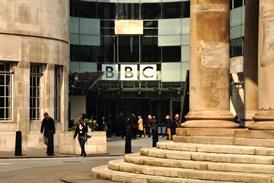If you're struggling with the concept of loudness versus volume, I might be able to help. Here is what I know.
Some background
Adverts on television are perceived to be louder than the programmes that flank them. Lots of viewers said so. And some of them complained. As a result, there is a new rule coming into force from next month (July 7). It states that:
Advertisements must not be excessively noisy or strident.
The maximum subjective loudness of advertisements must be consistent and in line with the maximum loudness of programmes and junction material.
The Broadcast Committee of Advertising Practice (BCAP), the body responsible for writing the TV Advertising Code, has come up with the new rule and it will be law. So there. (See this week's Broadcast for more details on how the market is dealing with this change).
Why was it loud to start with?
Most television programmes have a mixture of audio levels with loud bits and quiet bits. And subtle changes are used to build tension.
However, those pesky advertisers don't want subtle changes. They want to grab your attention so they compress the audio, limiting the range of sounds so that even quiet bits are as loud as possible (within legal limits).
So what you get is a situation where the peak levels of commercials are actually no higher than the peak levels of programme content but the average level of the ads is much higher. Unfortunately the average level is the one your ears care about.
Read more on why ads are louder than shows
Some technical stuff
Sound levels in TV broadcasting have traditionally been measured using Peak Programme Meters (PPMs), which indicate the peak sound levels (the loudest part or parts) of advert soundtracks.
To comply with the rule, broadcasters were told that the peak sound level at the studio output should not exceed a level of 6 on the PPM or, as a lot of advertisers used sound compression techniques, a maximum level of 4 on the PPM is imposed on ads with a highly compressed soundtrack.
The new solution
The new guidelines advise broadcasters to use a loudness-level meter to ensure compliance. The meters can monitor “subjective volume,” which is the audio level that the ear perceives in a show with a range of sounds.
Broadcasters will now have the option to carry out their testing in accordance with the following ITU (International Telecommunications Union) recommendations:
Algorithms to measure audio programme loudness and true-peak audio level (ITU-R BS1770) and
Requirements for loudness and true-peak indicating meter (ITU-R BS1771)
BCAP anticipates that the new rules will "reduce the risk of the audience having to adjust the volume in the advertisement breaks because they consider the advertisements to be too loud."
It may be difficult to adhere to though. According to a comment made by a sound engineer on a blog on the Guardian site:
“Maximum subjective loudness is completely meaningless, unenforceable rubbish. It's an empty crowd pleaser.”
What to do next?
If you are in this business and haven't already done something about this, try having a word with one of the following loudness-level meter making companies:
I hope that helps. If I've missed anything, why not let me know by adding comments below.




























No comments yet